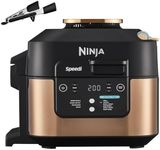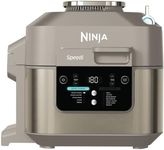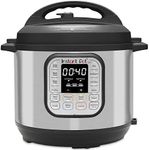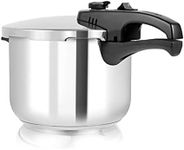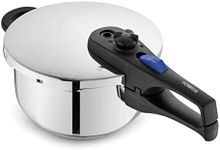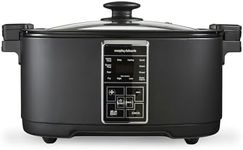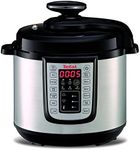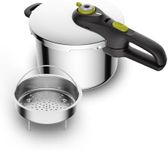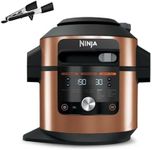Buying Guide for the Best Pressure Cookers
Choosing the right pressure cooker can significantly enhance your cooking experience by saving time and preserving nutrients in your meals. When selecting a pressure cooker, it's important to consider various specifications that align with your cooking habits and kitchen needs. Understanding these key features will help you make an informed decision and ensure that the pressure cooker you choose is the best fit for your lifestyle.CapacityCapacity refers to the volume of food a pressure cooker can hold, typically measured in liters or quarts. This is important because it determines how much food you can cook at once. Pressure cookers come in various sizes, ranging from small (around 3 liters) to large (up to 10 liters or more). If you usually cook for one or two people, a smaller capacity might be sufficient. For families or those who like to batch cook, a larger capacity would be more suitable. Consider your typical meal sizes and how often you entertain guests when choosing the right capacity.
MaterialPressure cookers are commonly made from stainless steel or aluminum. The material affects durability, heat conduction, and maintenance. Stainless steel is more durable and resistant to rust and scratches, making it a long-lasting option. It is also non-reactive, which is ideal for cooking acidic foods. Aluminum, on the other hand, is a better conductor of heat and is usually lighter and less expensive. However, it can react with acidic foods and is prone to scratches. Choose stainless steel for durability and versatility, or aluminum for better heat conduction and lighter weight.
Pressure SettingsPressure settings determine how much pressure the cooker can build up, affecting cooking speed and food texture. Most pressure cookers have at least two settings: low and high. High pressure is used for most cooking tasks, while low pressure is suitable for delicate foods like fish or certain vegetables. Some advanced models offer multiple pressure settings for more precise control. Consider what types of food you cook most often and whether you need the flexibility of multiple pressure settings.
Safety FeaturesSafety features are crucial in pressure cookers to prevent accidents. Common safety features include pressure release valves, locking lids, and pressure indicators. These features help manage the pressure inside the cooker and ensure it is safe to open. Some models also have additional safety mechanisms like automatic shut-off or lid-locking systems. If safety is a top priority for you, look for models with multiple safety features to ensure peace of mind while cooking.
Ease of Use and CleaningEase of use and cleaning can greatly affect your overall experience with a pressure cooker. Look for models with intuitive controls and clear instructions. Some pressure cookers have digital displays and programmable settings, which can simplify the cooking process. Additionally, consider how easy the cooker is to clean. Models with dishwasher-safe parts or non-stick interiors can save time and effort. If you prefer convenience, prioritize features that make the cooker easy to operate and maintain.
